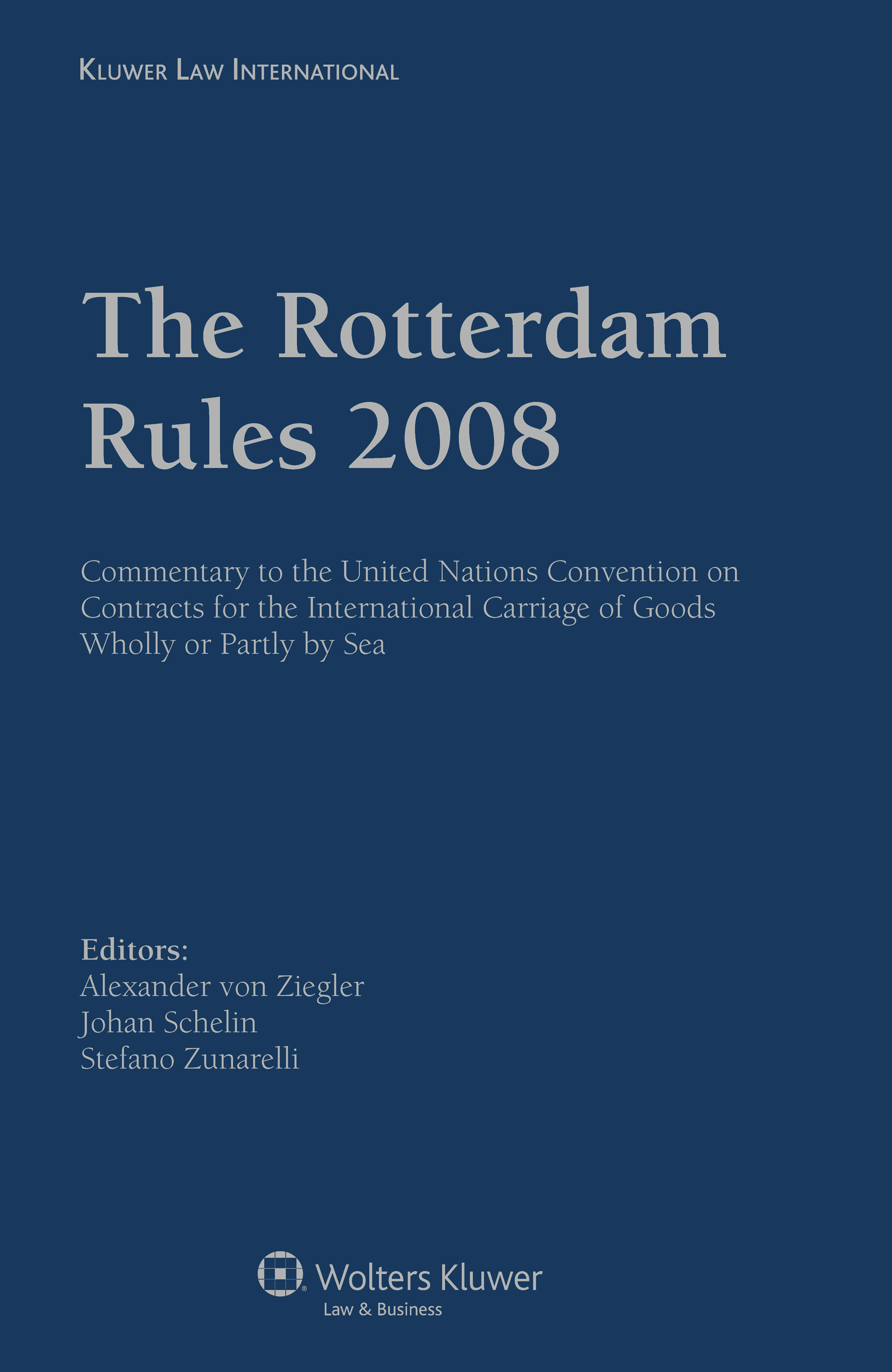- 中图分类号: D99
- 语种: ENG
- 出版信息: Kluwer Law International 2010 458页
- EISBN: 9789041149367
- PISBN-P: 9789041131485
- 原文访问地址:
KG评星
知识图谱评星,是一种基于用户使用的评价体系,综合图书的评论数量、引文数量、Amazon评分以及图谱网络中节点的PageRank值(即考虑相邻节点数量和重要性)等多种因素计算而得出的评价数值。星级越高,推荐值越高。CAT核心级
核心学术资源(CAR)项目作为教图公司推出的一项知识型服务,旨在打造一套科学、有效的图书评价体系,并协助用户制定相应的馆藏建设方案。CAR项目调查和分析12所世界一流大学的藏书数据,以收藏学校的数量确定书目的核心级,核心级越高,代表书目的馆藏价值越高。选取核心级在三级以上,即三校以上共藏的图书作为核心书目(CAT)。The 2008 UNCITRAL Convention commonly known as the Rotterdam Rules promises to achieve the hitherto elusive goal of a legal unification of international transport contracts. Its innovative set of rules accommodates such modern trade practices as those treating the carriage of goods by sea as part of wider door-to-door commercial transport operations and those relying on electronic commerce. It closes many gaps in the existing international transport regime, thoroughly specifying the relation of transport documents to the rights and obligations between exporters and importers of goods, and clarifying the interests of credit and insurance in contracts of carriage. This remarkable book, which will examine the Rotterdam Rules in depth, is edited and written by international lawyers intimately familiar with the negotiations leading to the Convention in finished form. It proceeds by a detailed analysis of each of the Convention’s 18 chapters in turn, in a clause-by-clause manner, drawing attention to interlinking implications throughout the document. The book’s lucid insights and guidance are especially valuable in showing exactly how the Rules improve the existing international transport regime through its clearer and more complete regulation of such elements as the following: • allocation of burden of proof; • evidentiary value of transport documents and electronic records, including non-negotiable documents and records; • freedom of contract in respect of volume contracts; • continuous character of the obligation of seaworthiness; • limits of liability; • rights during transit; • recovery of loss of and damage to goods caused by accidents of navigation; • jurisdiction and arbitration; • role of subcontracted carriers both on sea and inland; • role of warehouses, transport terminals and stevedoring companies; • risks and contract practices of lenders; • interests of freight forwarders, cargo insurers and liability insurers; and • prevention of maritime fraud. The authors provide a crystal-clear picture that allows the reader to appreciate the balanced way in which the interests of the various stakeholders are addressed by the Rules – the greater legal certainty for each party’s legal position, the freedom to extend the Rules by contract to the whole transport operation, the clear legal basis for the use of electronic transport records, and the flexibility with which the Rules have left room for evolving trade practices. It will be of immeasurable value to practitioners and all parties interested in understanding how the new Convention operates and how the provisions are intended to be applied after the Convention comes into force.







 京公网安备 11010602104826号
京公网安备 11010602104826号
